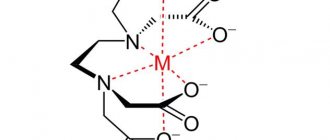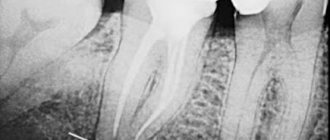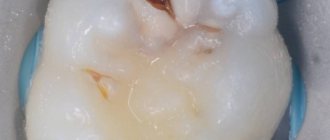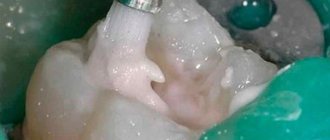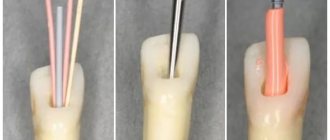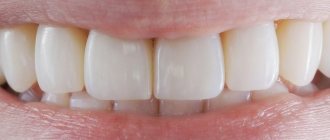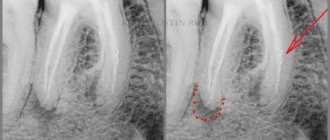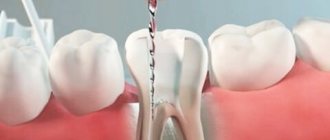Why does a tooth hurt after filling and what to do at home
The situation when a tooth hurts under a filling is common. It is not always possible to see a dentist right away. You have to dull the pain with painkillers or traditional medicine. To be able to help yourself, you need to understand the causes of pain.
Dentists have some criteria by which they determine whether pain after tooth filling is normal or not. The nature of the sensations, intensity, duration, frequency, etc. are taken into account. Patients can also understand the causes of pain by the nature of the sensations and accompanying symptoms. And some causes of the disease may mean that the dentist needs to be changed.
What materials are used to fill canals?
The main requirements for such filling materials are dense, hermetically sealed filling of the canals, chemical inertness (the material should not dissolve under the influence of body fluids), radiopacity (it should be clearly visible in the picture). Today, the following types of materials are used for filling dental canals:
- Solid fillers (fillers).
These include gutta-percha (a latex processing product), silver and titanium pins. Silver pins have recently been rarely used, since despite their good antibacterial properties they have a significant drawback - they do not provide complete tightness. - Polymer and natural pastes (sealers)
. A more preferable option is polymer sealers, which adhere better to the walls, do not stain dental tissue and do not dissolve when interacting with tissue fluids. - Glass ionomer cements.
Good adhesion and radiopacity, high biocompatibility and minimal shrinkage are the main positive qualities of such materials. They also have significant drawbacks: low strength, which is why such fillings are short-lived and not designed for serious functional loads. - Calcium hydroxide cements
. Non-toxic, biocompatible, radiopaque materials that exhibit minimal shrinkage, are easily removed if necessary and have bactericidal properties. However, they are considered not too strong and can break under heavy loads on the dental crown. - Polydimethylsiloxanes
. Modern reliable sealants with good therapeutic and operational parameters. Perhaps their only drawback is that this is a new product on the dental market and experience in using such materials has not yet been accumulated. There is no reliable information yet about the experience of patients after such treatment.
Painful sensations under an old filling
A situation familiar to many: a tooth was filled a long time ago, it didn’t bother me for a long time, and then it started to hurt. There are several possible reasons:
- progressive caries under an old filling;
- pulpitis (inflammation of the dental nerve) , developing as a result of untreated caries. Often this is a chronic form (periodically occurring paroxysmal pain in a tooth under a filling). Attacks occur most often at night. If left untreated, periodontitis will develop and the roots of the tooth will become inflamed;
- Periodontitis is a common cause of tooth pain under a filling. This is an inflammatory process in deep tissues. The slightest touch to a sore tooth causes terrible pain. It can radiate to the ears, head (temples and back of the head). Read on for details about why your tooth hurts and radiates to your temple. In this case, immediate assistance from a dentist is necessary. The old filling needs to be removed and the canals cleaned. The dentist places special preparations in the prepared and expanded canals that will relieve inflammation and disinfect the tooth cavity. Medicines are usually added twice. When the inflammation is removed, the doctor places a new filling. If the roots are inflamed, tooth treatment until complete recovery can be extended even for several months;
- tooth cyst It can develop over a period of time, from several months to several years. At first there are no sensations. Only in advanced cases does the tooth hurt. The cyst can lead to tooth and jaw destruction. In addition to toothache, signs of a dental cyst may include migraine, weakness, sinusitis, high fever;
- violation of the marginal seal of the filling. For various reasons, for example, due to abrasion or shrinkage of the material, the marginal fit of the filling is disrupted. Micro-cracks form between the filling and the tooth wall, where bacteria, saliva, and food debris enter. Dentin becomes infected, inflammation occurs, and recurrent caries or pulpitis develops.
- root crack. Occurs with heavy chewing load, injuries, or fixation of pins. The crack is difficult to detect, but after a while a complete vertical fracture may form in its place. The crack is difficult to diagnose, but causes pain or discomfort when stress is placed on the tooth.
A sign of the formation of a crack in the root may be a “click” heard by the patient during fixation of the pin or condensation of gutta-percha. As a rule, they remember about him after a while.
For more information regarding the causes of pain in a filled tooth, watch the video
